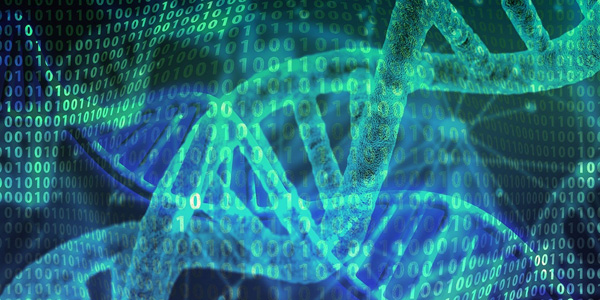A new era in gene editing begins with AI-created OpenCRISPR-1

[DNA. Photo Credit to Pixabay]
CRISPR technology, first adapted for human cells in 2012, has revolutionized biology by allowing scientists to cut and rewrite DNA with great precision.
However, the search for safer and more flexible tools has continued.
In August 2025, researchers introduced OpenCRISPR-1, the first CRISPR enzyme designed with the help of artificial intelligence.
Unlike traditional CRISPR proteins found in bacteria or viruses, OpenCRISPR-1 was created through computational design and laboratory synthesis.
The enzyme’s sequence was designed by an AI model trained to understand protein structure, then synthesized and tested in the laboratory.
According to the Nature paper published in August 2025, the amino acid sequence of OpenCRISPR-1 differs from SpCas9 by about 400 residues, underscoring that it is a distinct invention rather than a minor variant.
OpenCRISPR-1 represents a new direction for gene editing, one that evolution never produced on its own.
Rather than an extension of existing tools, it represents a separate invention created by design.
The importance of this development becomes clear when considering Cas9’s impact on science.
When researchers first used Cas9 in human cells in 2012, it gave them an unprecedented ability to cut and rewrite DNA with remarkable precision.
The tool has since been used in nearly every corner of life science.
Yet, Cas9 is not without flaws.
It sometimes cuts DNA at the wrong location, and it can trigger immune responses in patients because the human body recognizes it as foreign.
These weaknesses have driven scientists to search for safer and more reliable alternatives.
OpenCRISPR-1 may provide that answer.
Early testing shows that it cuts the intended DNA target with far fewer unwanted edits than Cas9.
Researchers at Profluent also report that the protein provokes less of an immune response in cells.
If these results are confirmed in further studies, the enzyme could become the foundation of safer treatments for genetic diseases.
The creation method is as significant as the result itself.
Profluent trained its model on large sets of microbial DNA sequences, teaching the system to interpret and generate proteins in the same way large language models process text.
From thousands of candidate sequences, one design showed unusual promise.
After synthesis and rigorous testing, it proved to be a functioning enzyme that could edit DNA inside human cells.
These steps resulted not from natural evolution but from a statistical model of protein function designed by AI.
What Profluent chose to do next was equally notable.
Instead of filing patents and keeping the sequence closed, the company made OpenCRISPR-1 publicly available along with supporting data.
Researchers around the world can now download and study it.
This decision reflects the belief that sharing tools accelerates progress, though it also places responsibility on the global scientific community to use the technology carefully.
The first AI-designed CRISPR enzyme is more than a single breakthrough.
It signals the possibility of many future designs.
If an algorithm can produce one working genome editor, it can likely produce others, perhaps tailored to treat specific disorders or to function only in certain tissues.
The same methods could extend into agriculture, synthetic biology, and even climate-related science.
The potential is immense, but so are the risks if powerful editing tools are developed without safeguards.
Experts caution that AI-designed systems may carry unforeseen risks, such as novel off-target effects that standard tests could miss, or ethical concerns about accelerating human genome editing beyond current regulations.
Addressing these challenges will be as important as celebrating the breakthrough.
The release of OpenCRISPR-1 may be remembered as a turning point.
Gene editing no longer relies only on enzymes that evolved over millions of years.
It can also rely on enzymes imagined by artificial intelligence.
This milestone is defined by a single number: 400.
That is the amino acid difference between SpCas9 and OpenCRISPR-1, and it captures the shift from discovery to invention.
Biology is entering a new era where human insight and machine creativity work together to shape the tools of the future.

- Esther Kim / Grade 11 Session 11
- Lexington High School

![THE HERALD STUDENT REPORTERS [US]](/assets/images/logo_student_us.png)
![THE HERALD STUDENT REPORTERS [Canada]](/assets/images/logo_student_ca.png)
